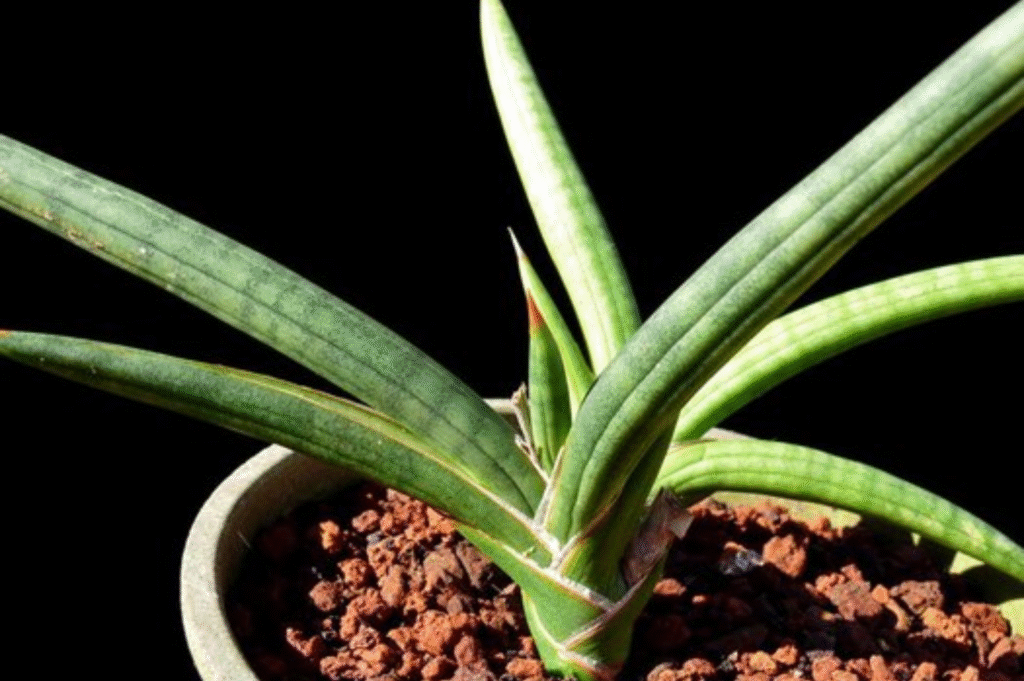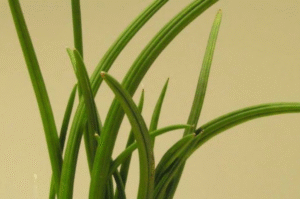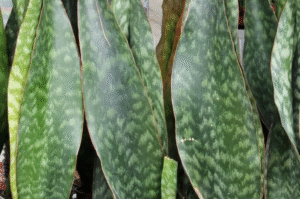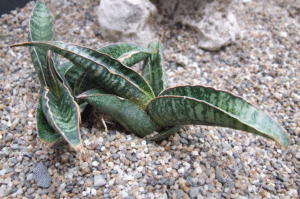Sansevieria pearsonii, commonly referred to as Rhino Grass or Pearson’s Sansevieria, is a rare, sculptural succulent prized for its upright, spear-like leaves and architectural elegance. Unlike the common snake plant varieties, Sansevieria pearsonii offers a bold, compact rosette shape that makes it a striking addition to modern indoor spaces. In this guide, we’ll walk you through everything you need to know to successfully plant, grow, and care for Sansevieria pearsonii, whether you’re a beginner or a seasoned plant enthusiast.
Introduction to Sansevieria pearsonii
Botanical Name: Sansevieria pearsonii
Common Names: Rhino Grass, Pearson’s Snake Plant
Plant Type: Perennial succulent
Origin: Angola and Namibia
Growth Habit: Compact, upright rosette
Light Needs: Bright, indirect to direct sunlight
Mature Height: 1 to 2 feet
Sansevieria pearsonii is particularly valued for its thick, cylindrical leaves with a subtle red edge and its ability to thrive in harsh environments. This plant is a top pick for minimalist plant lovers and collectors of rare sansevierias.
How to Plant Sansevieria pearsonii
1. Choose the Right Pot
- Size: Start with a small to medium-sized pot with drainage holes.
- Material: Terracotta or ceramic pots are ideal as they help wick away excess moisture.
2. Select the Proper Soil
- Use a well-draining succulent or cactus mix.
- You can also create your mix by combining:
- 2 parts perlite or pumice
- 1 part potting soil
- 1 part coarse sand
3. Propagation Methods
- Division: The most reliable method. Gently separate rhizomes and plant in separate containers.
- Leaf Cuttings: Cut a healthy leaf and let it callous for 2–3 days before planting in dry soil. Patience is key, as this process is slower.
Light & Location Preferences
Sansevieria pearsonii thrives in a bright, indirect light setting but can also tolerate direct sunlight and low light conditions. However, brighter light encourages better color and stronger growth.
Best Locations:
- Near an east or west-facing window
- On patios or balconies (if growing outdoors)
- Offices or shaded corners with grow lights
Avoid full, scorching midday sun in summer, especially outdoors, as it can scorch the leaves.
Watering Guide
One of the most common ways plant owners kill their Sansevieria pearsonii is by overwatering. This succulent prefers to stay dry rather than damp.
Watering Tips:
- Spring/Summer: Every 2–3 weeks (let the soil dry out completely)
- Fall/Winter: Once a month or even less
- Check before watering: Stick your finger 1–2 inches into the soil—if it’s dry, it’s time to water.
Avoid letting water sit in the pot or on the leaves—it can cause rot.
Temperature and Humidity
This plant is adapted to warm, arid climates. Keep it indoors if you live in colder zones.
- Ideal Temperature: 65–85°F (18–29°C)
- Minimum Tolerance: 50°F (10°C)
- Humidity: Tolerates low humidity but thrives in moderate conditions (30–50%)
Fertilizing Sansevieria pearsonii
Sansevieria pearsonii is not a heavy feeder, but occasional nutrition boosts growth and vigor.
Best Fertilizer:
- Use a balanced liquid succulent fertilizer (10-10-10 or 20-20-20).
- Frequency: Once a month during spring and summer.
- Avoid: Fertilizing in winter or overfeeding, it can lead to salt buildup.
Pruning and Cleaning
Pruning is rarely needed, but occasional grooming keeps the plant looking its best.
Tips:
- Remove dead or damaged leaves at the base with sterile scissors.
- Wipe leaves gently with a damp cloth to remove dust and enhance photosynthesis.
Pest and Disease Resistance
Sansevieria pearsonii is naturally resistant to most pests and diseases. However, improper care can invite trouble.
Common Problems:
- Mealybugs or spider mites: Treat with neem oil or insecticidal soap.
- Root rot: Caused by overwatering—let the plant dry out and trim rotten roots.
- Yellowing leaves: Often a sign of too much water or low light.
Preventive Tip: Always inspect new plants before introducing them to your collection.
Repotting Tips
This slow-growing plant doesn’t need frequent repotting; every 2–3 years is fine.
When to Repot:
- Roots are pushing through the drainage holes
- Soil has compacted or become waterlogged
- You want to divide and propagate the plant
Always choose a pot that’s one size larger than the current one and refresh the soil when repotting.
Toxicity Warning
Sansevieria pearsonii, like other snake plants, is mildly toxic to pets and humans if ingested.
- Symptoms: Nausea, vomiting, or drooling in pets.
- Safety Tip: Keep out of reach of children and animals.
Why Choose Sansevieria pearsonii?
If you’re a fan of rare and sculptural plants, Sansevieria pearsonii offers:
- Low maintenance care
- Eye-catching architecture
- Drought tolerance
- Air purification properties
- Adaptability to a range of light and climate conditions
This plant is a hidden gem in the snake plant family and an excellent choice for those wanting something a little off the beaten path.
Final Thoughts
Sansevieria pearsonii is an outstanding plant that’s as tough as it is attractive. With minimal care, the right soil, and a good watering routine, it will reward you with years of resilient, structural beauty.
Whether you’re decorating a minimalist apartment, sprucing up an office desk, or expanding your succulent collection, Pearson’s Snake Plant is a worthwhile investment in both style and serenity.






